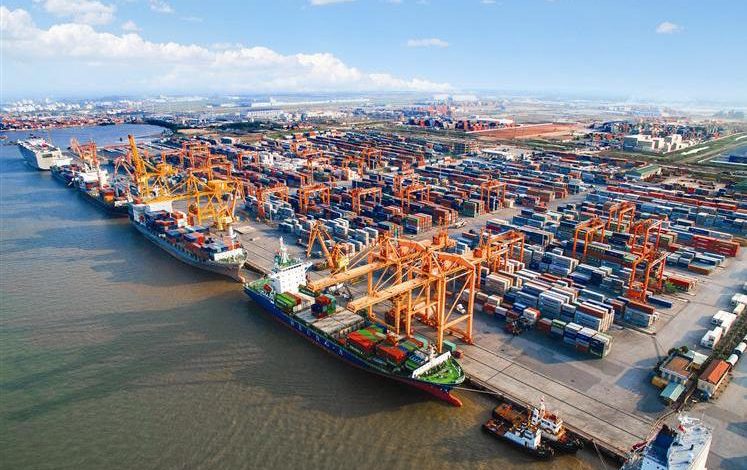Sam Chambers April 20, 2023 Splash247.com

Global trade patterns are being remoulded at a fast clip, with reshoring now clearly diminishing China’s dominance in the transpacific box trades.
Covid, a more strident China, tensions along the Taiwan Strait, and the war in Ukraine have all played their part in many companies looking for alternative places to source their goods lately.
Data from Oslo-based freight rates platform Xeneta published today shows the immense growth of Vietnam as a growing source for manufacturing goods bound for the US.
Focusing on the US, the last five years have seen a rise of 26% in containerised imports from Asia. However, of the 12 major economies in the region, China tied with Singapore in recording the lowest growth in these exports, with a 7% increase, according to Xeneta. Hong Kong was the only one of the economies not to grow volumes at all. Vietnam, meanwhile, saw a growth rate of 156% of containerised trade into the US between 2017 and 2022.
A similar trend emerges in terms of the share of imported volumes. In 2022, 56% of all containerised imports into the US from Asia came from China. The apparent strength of this figure clouds the reality that this share has actually fallen by 10 percentage points from 2017. Vietnam, on the other hand, has almost doubled its share, from 6% in 2017 to 11% in 2022.
The International Monetary Fund found that investments by foreign companies into China fell to their lowest level in close to two decades in the second half of 2022. They collapsed by 73% year-on-year, down to $42.5bn. Putting this into context, between the second half of 2020 and first half of 2022, foreign investments averaged $160bn in each half year.
By way of contrast, Vietnam has seen FDIs grow by 61.2% year-on-year across the first three months of 2023, including a 62.1% increase in the number of new foreign-invested projects. The processing and manufacturing sectors attracted the most investment here, accounting for around 75% of the total.
Into this year, the data to the US looks similar, while also highlighting the growth of new markets for Chinese exporters keen to fill the gap left by the Americans.
March saw a clear drop in exports from China to the US, with $3.6bn less trade than the year before. However, despite this significant fall, China’s total exports managed a year-on-year growth rate of 15% in March thanks to booming trade with Russia and countries in south Asia.
Emily Stausbøll, a market analyst at Xeneta, commented: “It takes time to build new production bases and make port infrastructure investments, as we’re seeing in, for example, Vietnam, Cambodia and Singapore, so the impact of investments today won’t be fully appreciated until tomorrow. This implies that the changing trade patterns we’re seeing now could just be the beginning of a far greater realignment.”
A recent study released by global consulting firm Kearney found that as many as 96% of American CEOs are evaluating reshoring as a strategy, an increase of 18% on 2022. Most already have committed to reshoring, or are already reshored.
“We seem to be heading toward a sustained reshoring movement,” said Omar Troncoso, a partner in Kearney’s consumer and retail practice. “Reshoring is becoming both a cause and an effect of companies significantly rethinking how they construct and operate a supply chain that will carry them forward into the next decade.”
Xeneta’s Stausbøll concluded: “Moving forwards, the evidence suggests we’ll see more trade and investment decisions based on geopolitics rather than, say, availability or price. How this progresses, and the speed of change, will be dependent on a range of uncertain factors – not least the escalating tension around Taiwan. So far, Europe has maintained its share of imports from China, with key leaders taking a more conciliatory approach than the US, but another major geopolitical event could transform that.”
